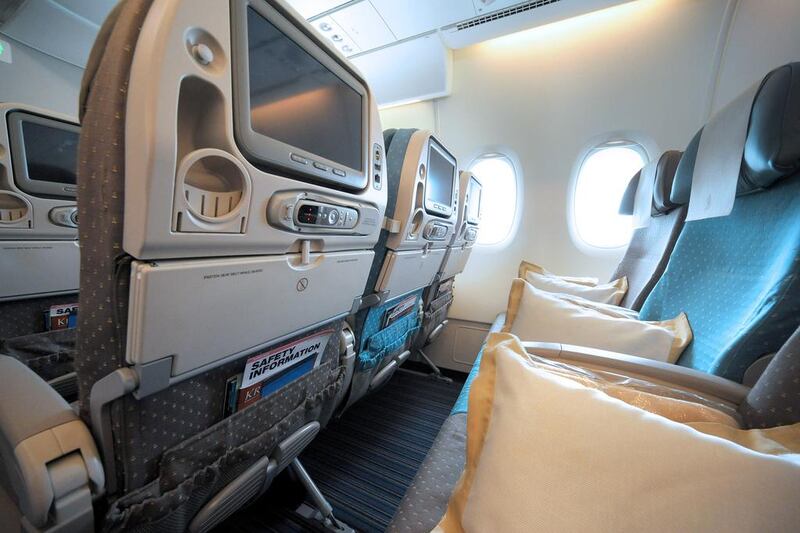Most people have a few things they won’t board a plane without. For Randy Petersen, it’s a tape measure.
Mr Petersen belongs to a small army of independent airline reviewers who fly around the world intent on gleaning information he says many carriers have “abdicated from providing” – such as the amount of legroom on offer in economy.
In an industry where fist fights have broken out over the “right to recline” and the number of spare seats has dropped almost 10 per cent in a decade, reducing the odds of being able to stretch out into an empty berth, the inside track on cabin layouts has become a hot commodity.
That’s especially so in economy class as discount carriers win a bigger slice of short-haul flights and mainline and charter operators offer wildly differing personal space on trips that can span 16 hours.
People pore over measurements – and the locations of toilets, galleys and exit rows – because seating is one of the few aspects of travel under their control, says Andrew Wong, Asia-Pacific director at TripAdvisor Flights in Singapore. “The flight could be late, the meal terrible and the staff rude, but at least you can choose your seat.”
While some carriers, like Singapore Airlines’ low-cost arm Scoot, make clear on their websites the dimensions of all seats, others are less forthcoming.
Cathay Pacific Airways and other carriers are quick to stress the plush look of plane cabins but give less publicity to the dimensions. When British Airways revealed plans for a refit of 95 Airbus Group A320 jets in June, it emphasised the use of charcoal grey leather and mood lighting, without quantifying the effect on legroom.
In the case of the British Airways refit, the pitch remained at 30 inches in coach, even though extra space was secured by using thinner cushions and moving the magazine pouch to head height. The pitch in business class was cut by four inches to accommodate an extra row, a move that reflected a shift of emphasis to “the whole package” rather just legroom, says the BA spokesman Euan Fordyce.
q&a quest for a little airspace
David Fickling reveals how to crack the legroom code.
Who are the real legroom experts then?
While most information published by seat comparison sites comes from manufacturers and airlines, it takes the human touch to fill in the blanks. TripAdvisor’s seatguru.com website relies predominantly on feedback from its three million monthly visitors. At Seatexpert, Mr Petersen thinks nothing of taking a dawn flight from Amsterdam to Helsinki just to check the measurements on a refurbished Finnair Oyj Airbus A319, although he specialises in more bespoke tips, such as which seats give the best view of the Grand Canyon.
What benefit can airline review sites offer the average passenger?
They can boost the chances of finding an empty seat next door, something that the former Boeing executive Klaus Brauer said in a blog post is “still the biggest discriminator in passenger satisfaction”.
But what’s the likelihood of having an empty seat next to you these days?
The possibility has receded sharply as airlines combat overcapacity, with 80.4 per cent of seats filled industrywide last year, compared with 73.5 per cent in 2004, according to the International Air Transport Association. Still, a web check can reveal which jets offer the greatest scope for finding yourself next to a vacant space. Boeing’s 787 Dreamliner has three blocks of three seats in each economy row, providing a mathematically greater chance of free-seat nirvana.
* Bloomberg News





